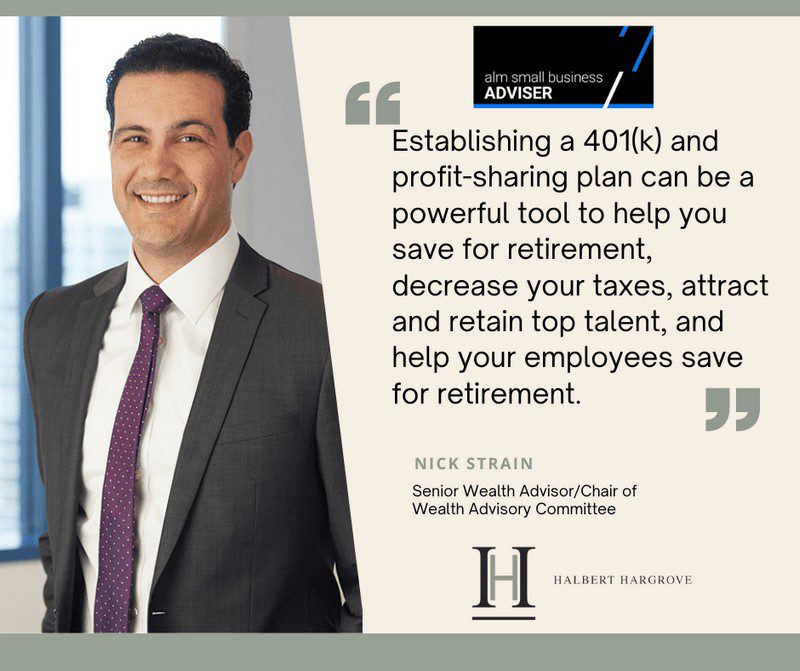By Nick Strain, CFP®, CPWA®, AIF®, Senior Wealth Advisor at Halbert Hargrove as Featured in Small Business Adviser
As a small business owner, you are constantly thinking of how to reinvest in your company to make it more successful, create stability, and keep employees happy and engaged.
This may involve an upgrade to equipment or software to keep pace with your competition and client satisfaction, but it is also important to think about how to invest in your team.
One way to do this is to focus on their financial well-being and investing in their retirement. You can do this by creating a 401(k) and profit-sharing plan that will invest in your own future to save up to $67,500 a year for your own retirement, which may allow you to save up to $24,975 in Federal Taxes and help your employees future retirement.
First, what is a 401(k) and Profit-sharing Plan?
A 401(k) and profit-sharing plan are two separate plans that can be combined to increase contribution amounts that are established by ERISA (The Employee Retirement Income Security Act of 1974).
This Federal law provides rules for how companies set up contributions and sets minimum standards for participation, vesting, and funding for retirement benefits for themselves and their employees.
401(k) and profit-sharing plans can be complex and have a lot of rules, so it is important to have the right financial team in place to help you make good financial decisions. This team should involve your CPA, financial advisor, third party administrator (TPA) and recordkeeper. There is a long list of services that each service provider may offer your company, but here is a short list.
- Your CPA helps provide you insights into the tax benefits of setting up and funding a 401(k) plan and helps create a budget for your total contribution amount based on your net income.
- A financial advisor typically helps select options for the TPA and recordkeeper based on the 401(k) plan size, contribution amounts and technology requirements and helps provide investment product recommendations.
- The TPA helps the owner review options for plan design, contribution and matching formula and completes the annual compliance and filing requirements.
- The recordkeeper is the company that receives the contributions and shows all of the participants their balances.


